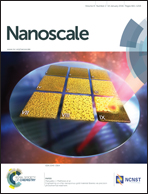Photoconductive probing of the trap distribution in switchable interfaces†
Abstract
Interfacial resistive switching features are highly dependent on the distribution of the carrier traps in the interface. However, the lack of probing seriously restricts ways of offering physical insights into its mechanism and improving interfacial resistors. In this work, we investigated a resistive switching interface that consists of Bi2S3 nano networks (BSNN) and F-doped SnO2 (FTO), uncovering the relationship between the decay of the photoconductance in BSNN and interfacial trap distribution. Based on this, we suggest a general method to probe the distribution of various interface traps. This method provides us with a new tool to study the interfacial trap distribution in an interfacial resistor, and it might also be used to understand other interface problems.


 Please wait while we load your content...
Please wait while we load your content...